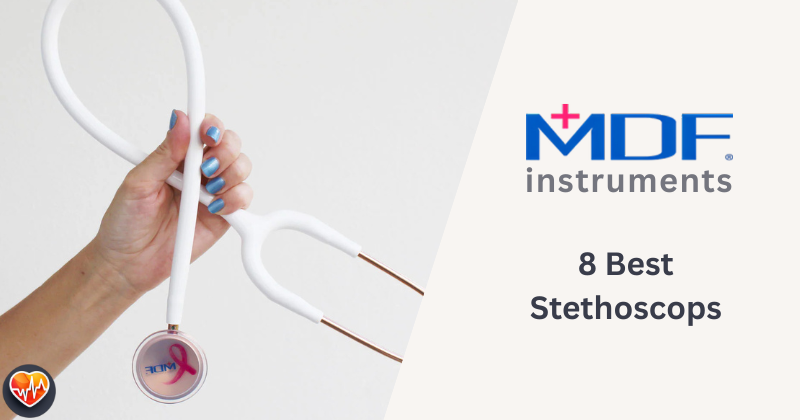
As a busy doctor, saving for retirement can be confusing.
There are so many options – 401(k)s, Roth IRAs – where do you even start? Not to mention all the rules around taxes and contributions.
This guide simplifies retirement planning for doctors.
We’ll explain different retirement savings accounts, show you how to lower your taxes, and help you get the most out of your employer’s plan.
- Unique Challenges: Doctors face unique challenges, such as starting their careers later and having high student loan debt, which can make saving for retirement difficult.
- Retirement Accounts: Several retirement accounts exist, including employer-sponsored plans (401(k)s, 403(b)s), Traditional IRAs, Roth IRAs, and SEP IRAs for self-employed doctors. Each has different tax advantages.
- Tax Benefits: Understanding tax deductions, pre-tax contributions, and tax-deferred growth can help you maximize your retirement savings and minimize your tax bill.
- Start Early: The sooner you start saving, the more time your investments have to grow thanks to compound interest.
- Seek Guidance: A financial advisor can help you create a personalized plan and choose the right investments based on your age, income, and goals.
- Common Mistakes: Avoid common pitfalls like waiting too long to save, not taking advantage of employer contributions, and neglecting to review your plan regularly.
- Take Action: Take the first step towards your dream retirement today! Start saving, explore your options, and don’t hesitate to seek help from a professional.
Understanding Retirement Landscape
- Late Start: Many doctors begin their careers later in life due to years of education and training, which can impact the time available to save for retirement.
- High Debt: Student loan debt is a common challenge for physicians, making it harder to allocate money towards retirement savings.
- Demanding Schedules: Long hours and busy schedules can make it difficult to focus on financial planning, including understanding options like employer-sponsored retirement plans and Roth IRAs.
- Income and Expenses: While doctors often have high incomes, they can also have high expenses. It’s important to create a retirement plan that accounts for your current lifestyle and future goals.
- Beyond Money: Retirement is more than just having enough money saved. It’s about what you want to do with your time and how you want to transition out of a demanding career. Physician retirement planning should also consider these personal aspects.
This guide will help you navigate these challenges.
We’ll cover everything from understanding the tax benefits of different retirement accounts to making the most of your employer contributions so you can retire comfortably.

Retirement is Different for Doctors
Okay, let’s dive into the different “buckets” you can use to save for retirement. Think of these like different piggy banks, each with its pros and cons.
Employer-Sponsored Retirement Plans: This is the piggy bank your work gives you. It’s usually called a 401(k) or 403(b). The cool thing is, sometimes your employer will match a portion of what you put in, which is like getting free money! These plans often have a wide range of investments to choose from, like mutual funds. One thing to remember, though, is there are limits on how much you can contribute each year.
Individual Retirement Accounts (IRAs): This is your piggy bank. There are two main types:
- Traditional IRA: You put in pre-tax dollars, meaning you get a tax break now. But, you’ll pay income taxes on the money when you take it out in retirement.
- Roth IRA: You put in money you’ve already paid taxes on. The best part? You won’t owe any taxes when you withdraw it in retirement. If you think you’ll be in a higher tax bracket later in life, this could be a good option.
Now, here’s a special tip just for doctors: If you earn too much to contribute to a Roth IRA directly, you can do a “backdoor Roth IRA.” It’s a sneaky trick, but it’s perfectly legal!
Taxable Accounts: These are like regular savings accounts, but you can invest the money in stocks or mutual funds. You won’t get any special tax breaks, but there are no contribution limits either.
Cash Balance Plans: These are a mix of a 401(k) and a pension. Your employer puts money into the plan each year, and it grows at a fixed rate. If your workplace offers this, it can be a great way to save.
Defined Benefit Plans (Pensions): These are less common these days, but some hospitals might still offer them. It’s a guaranteed monthly payment from your employer when you retire. It’s more flexible than other options, but it’s a nice safety net.
Whew! That’s a lot of options, right?
The best plan for you will depend on your age, income, and retirement date. A financial advisor can help you figure this out, especially if you’re thinking about retiring early.

Quick Tips:
- Start early: The sooner you start saving, the more time your money has to grow.
- Max out employer contributions: If your employer matches your contributions, make sure you contribute enough to get the full match. It’s free money!
- Take advantage of catch-up contributions: If you’re over 50, you can usually contribute more to your retirement accounts.
- Don’t forget about student loan payments: It’s important to balance saving for retirement with paying off debt.
With so many options for retirement savings, you can create a plan that works best for you. Remember, it’s never too early (or too late) to start planning for your future!
Beyond Savings
All right, so we’ve covered the different types of retirement accounts you can use. Now, let’s talk about how taxes fit into the picture.
Tax-Advantaged Accounts: These accounts give you special tax breaks to encourage saving for retirement. They include:
- Employer-sponsored plans (401(k), 403(b)): These are tax-deferred, meaning you contribute pre-tax dollars, which lowers your taxable income today. You’ll pay income tax later when you withdraw the money in retirement. This can be a great option, especially if your employer offers matching contributions.
- Traditional IRAs: Similar to employer-sponsored plans, these are tax-deferred, giving you an immediate tax deduction on your contributions.
- Cash balance plans: Also tax-deferred, these plans are funded by your employer, giving you a nice bonus on top of your salary.
Roth IRAs
These are different because you contribute money you’ve already paid taxes on (after-tax dollars). The trade-off is that all future earnings and withdrawals in retirement are completely tax-free!
If you think you’ll be in a higher tax bracket when you retire, this could be a great choice.
Taxable Accounts
These don’t have any special tax breaks, but they do offer flexibility. You can withdraw your money anytime without penalty, unlike with tax-advantaged accounts.
Plus, there are no contribution limits, so you can save as much as you want.
Key Tax Concepts

- Pre-tax Contributions: This means the money you put in reduces your taxable income right now, potentially lowering your tax bill for the year. It’s like getting an instant discount on your taxes!
- Tax-Deductible Contributions: Similar to pre-tax, this reduces your adjusted gross income (AGI), which can lead to lower tax bills and potentially qualify you for other tax deductions or credits.
- Tax-Deferred Growth: Your investments grow without being taxed year after year. This allows for compounding, which can make a big difference over time.
- Income Tax in Retirement: You’ll eventually have to pay income taxes on the money you withdraw from most retirement accounts, except for Roth IRAs. Be sure to plan for this so you’re not caught off guard.
- Catch-Up Contributions: If you’re 50 or older, you can make additional “catch-up” contributions to certain retirement accounts to boost your savings.
Remember: Tax rules can be tricky. Talk to a financial advisor to create a plan that minimizes your tax bill now and in the future. By understanding the tax implications of different retirement accounts, you can make the most of your hard-earned money.
Tax Considerations for Doctors
Now that we’ve covered the basics, let’s spice things up and examine some strategies that can turbocharge your retirement savings.
Supercharge Your Savings
- Maximize Employer Contributions: If your employer offers a 401(k) or 403(b) match, contribute at least enough to get the full game. It’s like getting a bonus to save for your future!
- Catch-Up Contributions: Once you hit 50, you can put extra money into your retirement accounts each year. This is a great way to make up for lost time or boost your savings as you get closer to retirement.
- Consider a Backdoor Roth IRA: If your income is too high to contribute directly to a Roth IRA, this strategy can help you take advantage of tax-free growth.
- Don’t Forget Your Taxable Account: This account doesn’t have the same tax benefits as retirement accounts, but it offers flexibility and can be a good place to invest extra cash.
Tax-Smart Strategies
- Tax-Loss Harvesting: This involves selling investments that have lost value to offset capital gains taxes. It’s a bit like playing a game of financial Tetris, but it can save you a bundle.
- Asset Location: Different types of investments are taxed differently. By strategically placing assets in different types of accounts (taxable vs. tax-advantaged), you can minimize your tax bill.
- Qualified Charitable Distributions (QCDs): If you’re 70 1/2 or older, you can donate directly from your IRA to a charity. This can count towards your required minimum distributions (RMDs) and help you avoid paying taxes on those withdrawals.

Early Retirement Planning
- FIRE (Financial Independence, Retire Early): This movement is gaining popularity among doctors who want to retire early and live life on their terms. It involves aggressive saving and investing to reach financial independence sooner.
- Calculate Your “Number”: Figure out how much money you’ll need to retire comfortably. This will help you set savings goals and track your progress.
- Create a Budget: Knowing where your money goes each month can help you identify areas to cut back and increase your savings rate.
- Increase Your Income: Explore options for boosting your income, such as moonlighting, starting a side hustle, or investing in real estate.
- Seek Professional Guidance: A financial advisor specializing in early retirement can help you create a personalized plan and navigate the complexities.
Remember, retirement planning isn’t a one-size-fits-all process. The best approach for you will depend on your circumstances and goals.
Feel free to get creative and explore different strategies. The sooner you start planning, the more options you’ll have, and the more enjoyable your retirement will be!
When Should You Start Planning?
Now that we’ve got a handle on the types of accounts and their tax benefits, you might be wondering when to start saving and how much to put away.
When to Start
The simple answer is as early as possible. Even if you’re still paying off student loans or have other financial goals, it’s crucial to start saving for retirement.
Time is your most powerful ally when it comes to growing your money. The sooner you start, the more time your investments have to grow and benefit from compound interest.
Imagine it like a snowball rolling down a hill – the earlier you start rolling, the bigger it gets!
How Much to Save
There’s no magic number, but a good rule of thumb is to aim to save at least 15% of your income for retirement.
This may seem daunting, especially when you’re starting, but remember that every little bit counts. Even small contributions can add up over time.
Retirement Planning by Age
- 20s and 30s: Focus on paying off high-interest debt (like credit cards) and getting into the habit of saving. Even if it’s just a small amount each month, it’s a start. Look into employer-sponsored retirement plans (like 401(k)s or 403(b)s) and IRAs.
- 40s and 50s: This is when you should ramp up your savings. If you haven’t already, max out your employer’s contributions and consider catch-up contributions if you’re 50 or older. Explore whether your employer offers a cash balance plan, which can provide additional tax-deferred savings.
- 60s and Beyond: Review your retirement plan and adjust as needed. If you’re behind on your savings, don’t panic! There are still options like catch-up contributions or even working a few extra years.
Additional Tips:
- Talk to a Financial Planner: They can help you create a personalized retirement plan, estimate how much you’ll need to save, and suggest investment strategies based on your risk tolerance.
- Consider a SEP IRA: If you’re a self-employed doctor or have a small business, this type of individual retirement account allows you to make larger contributions on a pre-tax basis.
- Don’t Neglect Your Taxable Account: This can be a good place to invest extra money for your retirement, especially if you’ve maxed out your contributions to tax-advantaged accounts.

Remember, retirement planning is a marathon, not a sprint. By taking small steps now, you’ll be well on your way to a comfortable and fulfilling retirement.
The key is to get started and stay consistent with your savings.
And don’t hesitate to seek help from a financial professional if you need it. They can be your trusted guide on your journey to financial freedom!
Common Mistakes to Avoid
Okay, now that we’ve covered a lot of ground, let’s talk about some common mistakes that even smart folks like doctors can make when planning for retirement.
It’s better to learn from others’ slip-ups, right?
- Waiting Too Long to Start:
This is a biggie! The sooner you start saving, the more time your money has to grow. Thanks to the magic of compound interest, even small amounts invested early on can turn into a big nest egg down the road.
So, even if you’re still paying off those student loans, keep retirement planning. Start small if you have to, but start now!
- Not Taking Full Advantage of Employer Matches:
If your employer offers to match your contributions to your 401(k) or 403(b), make sure you’re contributing enough to get the full match. It’s like turning down free money!
If you are lucky enough to have a defined contribution plan with a game, you will want to contribute enough, at least, to get the full game.
- Overlooking Tax-Advantaged Accounts:
Take advantage of the tax benefits of accounts like 401(k)s, 403(b)s, Traditional IRAs, and even SEP IRAs if you’re self-employed.
These accounts can significantly reduce your tax bill and help your money grow faster.
If your ordinary income tax rate will be lower in retirement, then a traditional IRA is a better option for you to defer taxes. If not, you may want to explore a Roth IRA.
- Ignoring Catch-Up Contributions:
If you’re 50 or older, the IRS lets you contribute extra to your retirement accounts. Take advantage of these catch-up contributions to boost your savings and make up for any lost time.
- Not Reviewing Your Plan Regularly:
Life happens, and your financial situation can change. Please review your retirement plan every year or so to make sure it’s still on track. A financial advisor can help you make any necessary adjustments.
- Trying to Do It All Yourself:
Retirement planning can be complicated, especially with all the different accounts and tax rules. Feel free to ask for help from a financial professional.
They can provide guidance and help you create a plan that meets your specific needs and goals.
By avoiding these common mistakes, you’ll be well on your way to a secure and enjoyable retirement. Remember, the key is to start early, save consistently, and take advantage of all the tools and resources available to you.
Conclusion

Alright, future retirees, let’s wrap this up!
We’ve covered a lot, from the different types of retirement accounts (like 401(k)s, IRAs, and even cash balance plans) to the tax advantages they offer.
We’ve discussed how to maximize employer contributions, make catch-up contributions if you’re 50 or older, and set up a Simplified Employee Pension (SEP) IRA if you’re self-employed or own a small business.
If you work for a larger organization, you might have access to a defined benefit plan or a profit-sharing plan that also offers tax advantages.
Remember:
- Start saving early.
- Max out employer contributions.
- Use tax-advantaged accounts.
- Review your plan regularly.
Your next steps:
- Figure out which retirement accounts are right for you.
- Talk to a financial advisor to create a personalized plan.
- Don’t forget to pay your taxes! Your future retired self will thank you when you have a solid nest egg waiting.
Remember, retirement is a reward for all your hard work. By planning and making smart choices, you can ensure your golden years are truly golden.
Start planning for your dream retirement today!
Frequently Asked Questions
What are the tax advantages of retirement accounts for doctors?
Tax-advantaged retirement accounts, like 401(k)s, 403(b)s, and Traditional IRAs, allow you to contribute pre-tax dollars, reducing your current taxable income. This means you pay less in taxes now, but you’ll pay income taxes on withdrawals in retirement.
How can a Roth IRA benefit me if I’m a doctor?
A Roth IRA is funded with after-tax dollars, but all qualified withdrawals in retirement are tax-free. If you expect to be in a higher tax bracket later in life, this can be a big advantage.
What are catch-up contributions, and how can I use them?
If you’re 50 or older, catch-up contributions allow you to put extra money into your retirement accounts each year, helping you save more as you approach retirement.
What if I own my practice or work for a small business?
Simplified Employee Pension (SEP) IRAs are designed for self-employed individuals and small business owners, allowing you to contribute a larger percentage of your income compared to traditional or Roth IRAs.
Do I still have to pay taxes in retirement?
Yes, you’ll usually owe income taxes on withdrawals from tax-deferred accounts like 401(k)s and Traditional IRAs. However, Roth IRA withdrawals are tax-free if you meet certain requirements. Careful planning can help you minimize your tax burden in retirement.













